The Qixi Festival (七夕), also known as the “Double Seventh Festival” or Chinese Valentine’s Day, is a celebration deeply rooted in Chinese culture. It occurs on the seventh day of the seventh lunar month. This year, it was on the 22nd of August. The festival originates from the legend of the Cowherd and Weaver Girl (牛郎织女). Because their romance was forbidden, the star-crossed lovers were banished to opposite sides of the Milky Way and could only see each other once a year on Qixi, when a flock of birds formed a bridge allowing them to reunite. As the event gained modern significance, it has not only become a cultural tradition but also a thriving opportunity for brands to engage with local consumers by crafting marketing campaigns that preserve the essence of this special day.
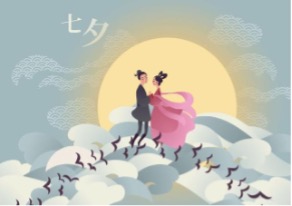
The importance of Chinese Valentine’s Day in China
Young people are enthusiastic about Qixi gifts
Despite its traditional origins, Qixi is widely celebrated by young Chinese. In particular, couples consider this festival as a way of showing and expressing their love. On the Baidu Index, the search for ‘Qixi’ is predominantly from 20 to 29 years old (55.72%) followed by 30 to 39 years old (24.65%).
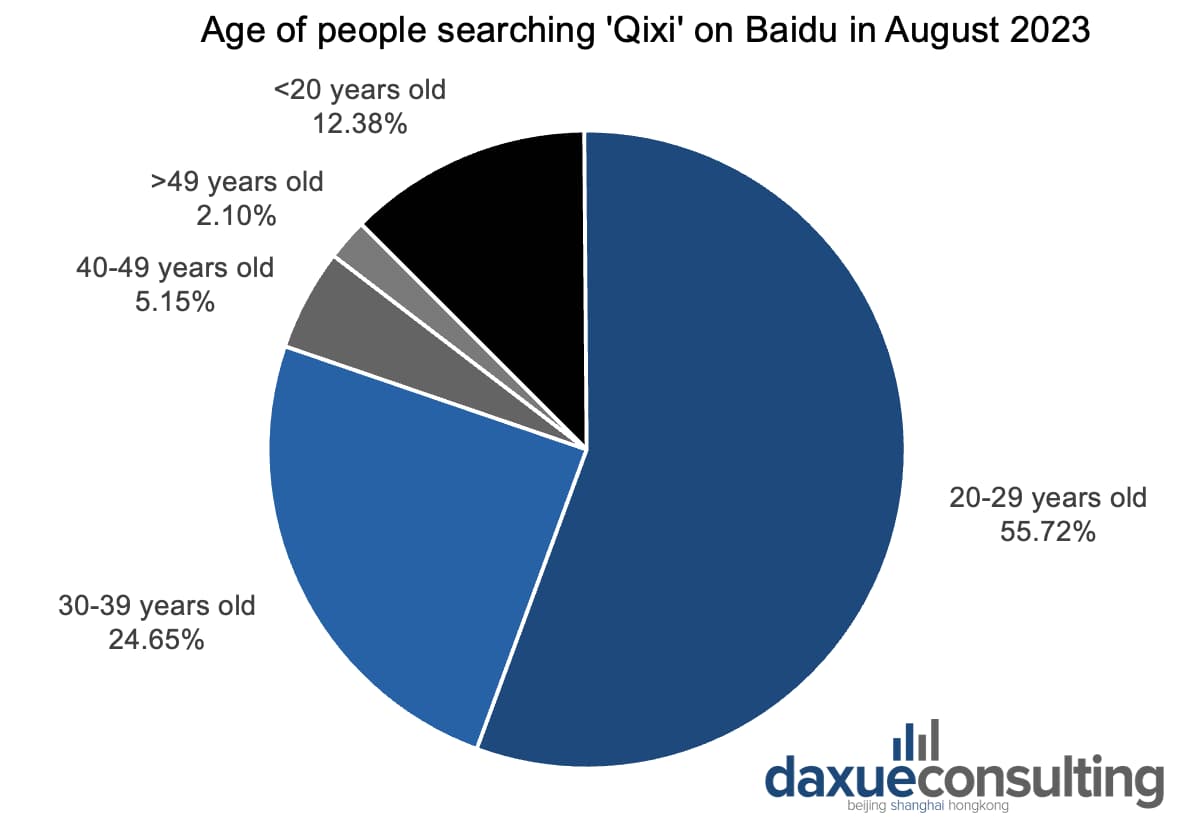
On local social media platforms, such as Weibo and Xiaohongshu (小红书), popular posts related to Qixi are mainly about people sharing the gifts they plan to buy and showing off what they received for the special day. Most of the hottest comments are about the gift-giving aspect of the Qixi festival.

A sense of excitement that starts in June
The festival occurs on the seventh day of the seventh lunar month, which is usually in August. However, the search for the perfect Qixi gift starts towards the end of June, only to drop abruptly once the festival has passed. In that regard, this period represents the optimal time for brands to release their Qixi-themed marketing campaigns and engage with customers.

Gift-giving is not only for couples
For couples, exchanging gifts during Qixi gives them a sense of ritual and brings them happiness. However, while it is called “Chinese Valentine’s Day”, gift-giving is not limited to couples. On social media, many netizens share their intentions to give gifts to their friends, mothers, or even themselves. Even children use flowers to express their gratitude towards their mothers. Like many other traditional Chinese festivals, such as Chinese New Year, Dragon Boat Festival and Mid-Autumn Festival, Qixi became an opportunity to show appreciation to those close to us.
As for the types of gifts, they cover a wide range of categories. In 2022, the top sellers for gifts people gave their partners were clothes (31.9%), WeChat red packets (31.8%) and fresh flowers (26.7%).
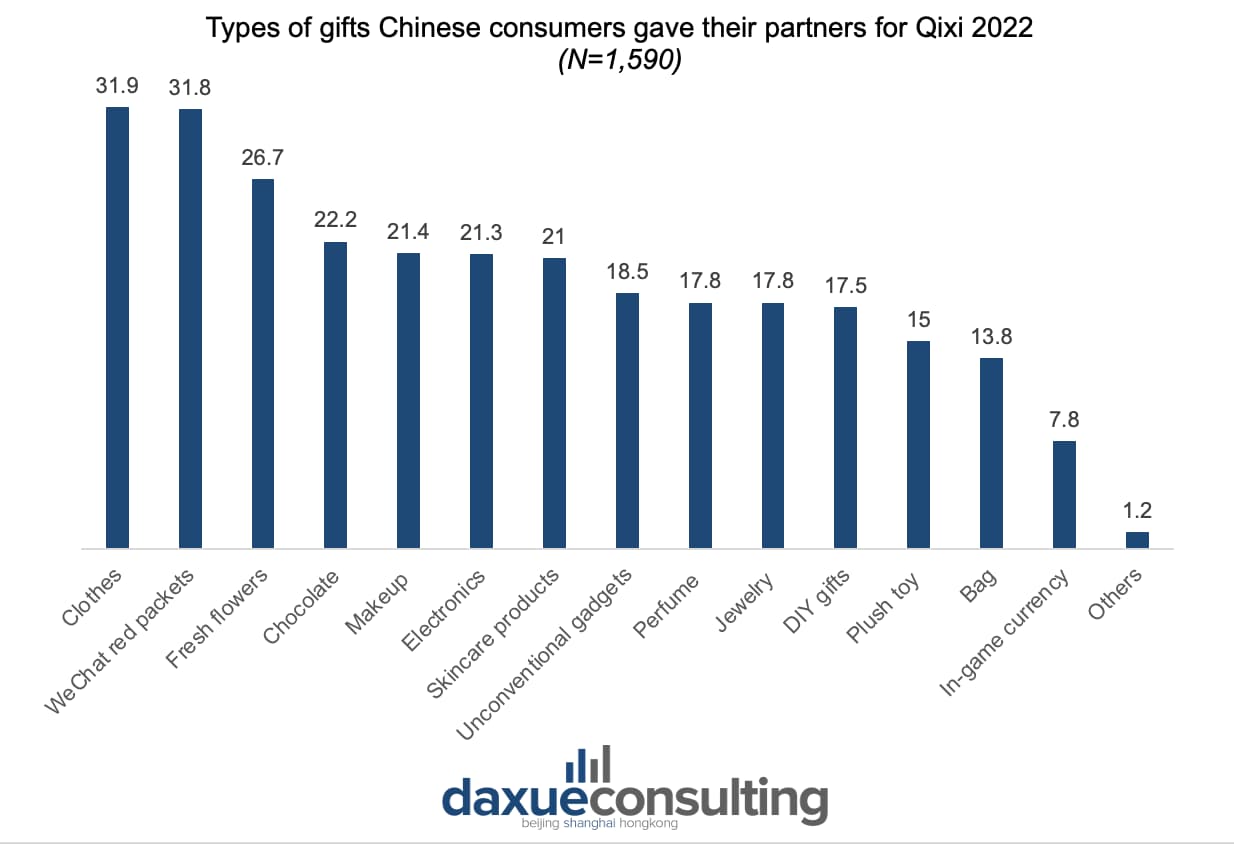
Download our report on the She Economy in China

E-commerce platforms are the first place to purchase gifts
With the rapid development of e-commerce platforms and social media in-app purchases in China, people’s shopping methods have gradually shifted from offline to online shopping. According to iiMedia Research, among Chinese gift-givers, 73.2% buy gifts on comprehensive e-commerce platforms, like Taobao. 61.9% buy gifts in brick-and-mortar stores and 39% buy on specialized online shops catered for gifts. The rise of online shopping has allowed customers to spend significantly less time finding the perfect gift, which fits their often-busy schedules.
Successful marketing strategies of Chinese Valentine’s Day
Emotional storytelling resonates with customers
On the 17th of August 2023, Huawei’s official account released a short video to promote its new Nova 11 series phone. The film highlights how using this phone, especially its high-tech camera, can bring people closer together. It showcases cute moments in a relationship, which left netizens with a very positive impression. The reaction from users can be attributed to the romantic storytelling, which is both engaging and encapsulates the spirit of Qixi.
Huawei released a similar Chinese Valentine’s Day campaign last year for its Nova 10 series phone. They invited six couples of different ages to shoot each other the way young couples do. The final footage became proof that love remains young and does not fade with age.
This type of story-telling-based campaign has been used by other brands, such as Apple, and allows them to connect with their customers on an emotional level.
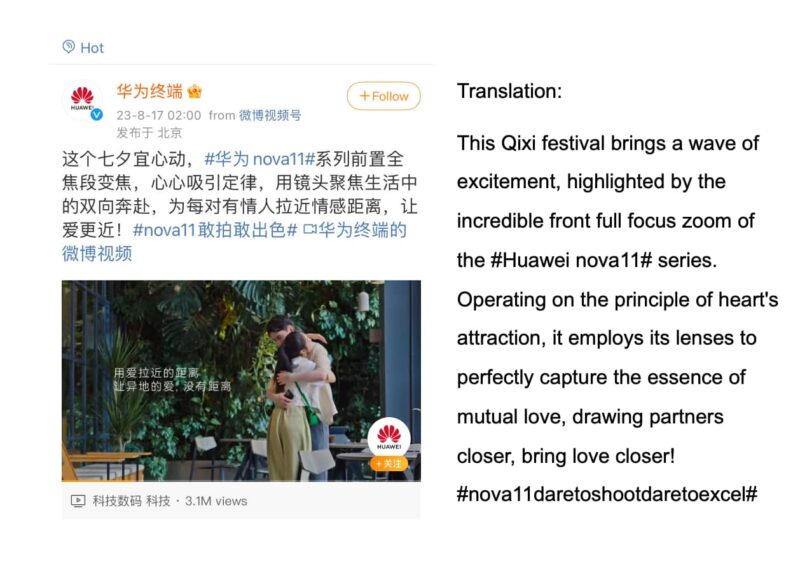
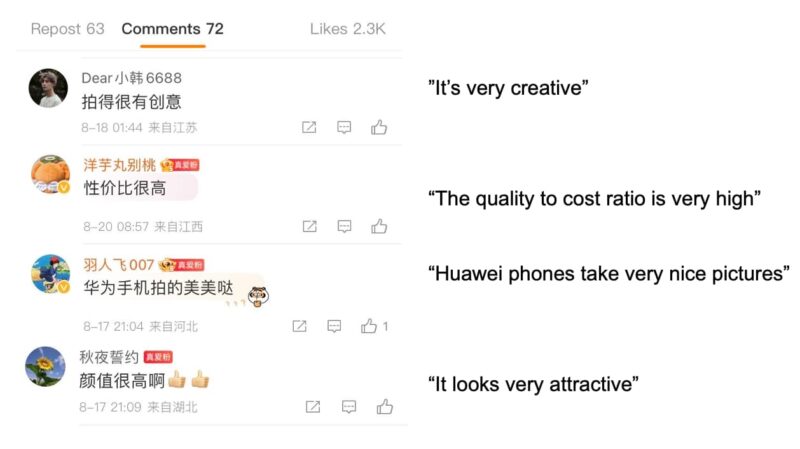
Limited edition products create excitement
The famous coffee chain Starbucks has been releasing Qixi-themed beverages every year, which has created excitement among Chinese consumers. This year, they released two limited-edition sweet drinks on the 21st of August: the osmanthus flavoured mousse espresso and the osmanthus cloud latte, sold at 35 RMB and 41 RMB respectively.
In their Qixi campaign on Weibo, they wrote: “What’s the taste of Qixi? It’s the sweet and light taste of osmanthus.” While its connection with Chinese Valentine’s Day is difficult to make at first, the time of the festival coincides with when osmanthus flowers bloom. In that regard, osmanthus is a flavour associated with the months of August and September. Moreover, the flowers also often appear in illustrations of the legend of Qixi. Under Starbucks’ Weibo posts, many netizens expressed their enthusiasm and excitement to try the new drinks, not only because they like the flavour, but also because it embodies the essence of the day.
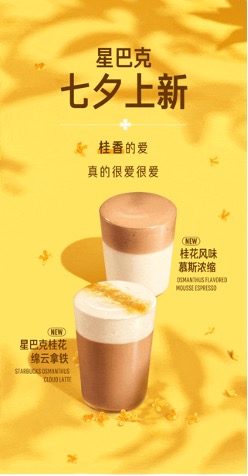
Influencer collaborations increase visibility
On top of releasing Qixi-themed products, some brands go even further and increase their brand visibility through influencer collaborations. In 2021, the luxury brand Louis Vuitton released a series of limited items called ‘Fall in Love’, including bags, belts, shoes, and accessories. Their Qixi-themed products were released relatively early, in June, and covered a wide range of prices. Netizens were very excited about the launch of this Qixi series and shared their purchases online.
Louis Vuitton showcased renowned Chinese actresses Dilraba Dilmurat, Liu Haocun, and singer Xu Jiaqi in their Qixi campaign, leveraging their widely acclaimed beauty. Pictures of the campaign drove substantial engagement on local social media platforms. Netizens also commented on the good looks of the celebrities and how fitting they are to represent the brand.
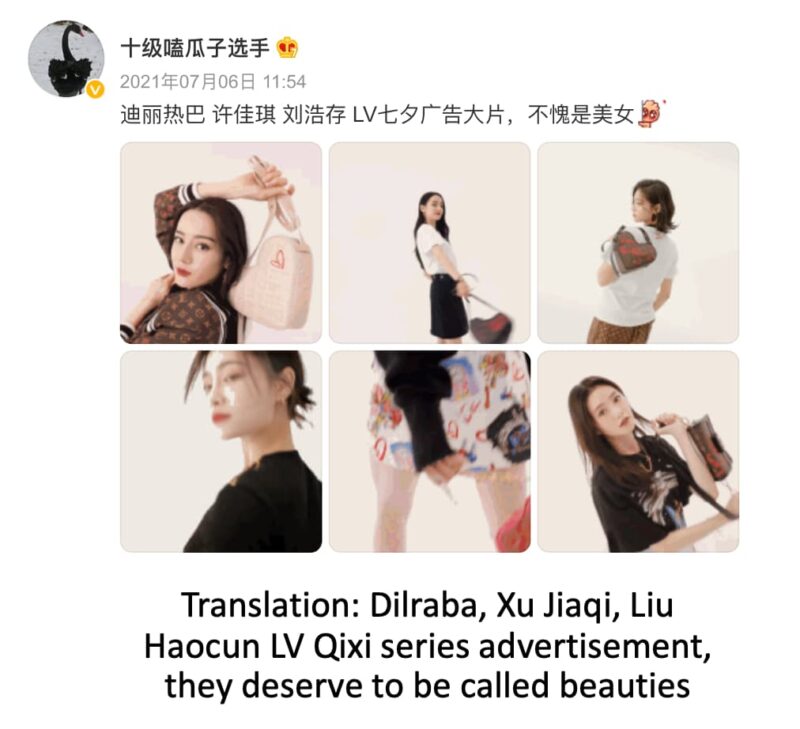
Interactive campaigns increase customer engagement
In 2015, the luxury brand Mulberry launched an interactive Qixi campaign called ‘Mulberry Love Letters’. It urged Chinese individuals globally to share sincere messages through WeChat. The brand would then convert these messages into digital love letters and forward them to the intended recipients. To attract customers to their brick-and-mortar stores, chosen recipients were given the chance to visit stores in Shanghai, Beijing, London, Paris, New York, or Toronto, where they could receive a personalized handcrafted leather bracelet based on their digital love letters.
This campaign stays true to the origin of Qixi by showcasing the long-distant aspect of love, just like the two lovers separated by the Milky Way. Here, WeChat is a modern way for long-distance couples to stay close. By combining online and offline interaction, Mulberry increased both foot traffic and customer engagement through personal experience.

Brands that missed the mark on Qixi’s meaning
Despite many brands being successful at engaging with customers during Qixi, some missed the mark and received harsh criticism from netizens. In August 2020, the luxury brand Dolce & Gabbana released a Qixi campaign showcasing two virtual women, wearing Dolce & Gabbana clothes on a beach. Critics criticized this campaign for its apparent lack of connection to Qixi. Moreover, Chinese people were unimpressed by the lack of understanding of their culture. Some accused the brand of not designing this so-called exclusive clothing series just for Chinese Valentine’s Day, but decided to call it Qixi in China, nonetheless. This reaction was even more negative since Dolce & Gabbana had previously offended Chinese netizens with its infamous campaign showcasing a Chinese model eating Italian food with chopsticks in 2018. Despite a public apology from the founders, their brand’s name has been tarnished in China. As a result, the Qixi campaign was seen as a clumsy attempt to regain favor.
Dolce & Gabbana is not the only luxury brand having missed the mark on Qixi marketing. In 2020, Balenciaga was heavily criticised for its tacky and ‘disgraceful’ advertisements.

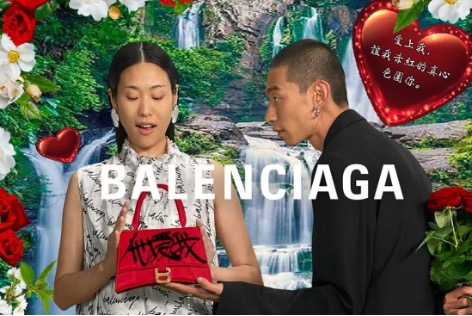
What we can learn about brand engagement during Chinese Valentine’s Day
- Despite originating from a mythological legend, the Qixi festival is mainly celebrated by young Chinese. They take Qixi as an opportunity to give gifts to their partners but also to their friends, mothers, or themselves.
- Clothes, WeChat red packets and flowers were the top sellers in 2022. Whilst, consumers prefer to buy gifts on e-commerce platforms.
- Incorporating the spirit of Qixi into marketing campaigns is the key. Through emotional storytelling, limited-edition products, celebrity collaborations and personalised customer interaction.
- However, they must be careful about the relevance of their campaign with the festival. Netizens have criticised brands that appear to use Chinese Valentine’s Day without really capturing its meaning.





